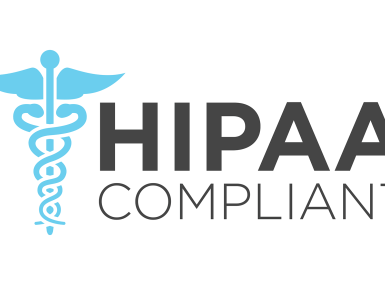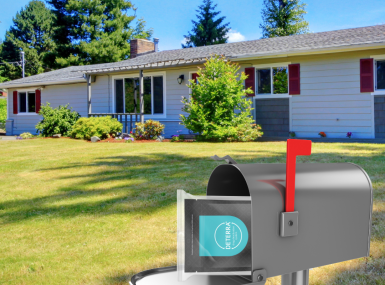Building Resilience Against Climate Change – Insights from Tidal Basin
Upcoming Events
Related News

Key Takeaways
From Our Partners
This post is sponsored by our partners at Tidal Basin
Amidst the growing threat of climate-related disasters, which have become more frequent and severe, Carlos J. Castillo, CEM, President of Federal Services at Tidal Basin, presented a vital strategy aimed at bolstering local resilience at the 2024 National Association of Counties Legislative Conference this past February. Carlos further elaborated in his presentation at the 2024 NACo Annual Conference on July 13th, 2024.
His presentation highlighted the pressing need for an integrated response to changing climate and positioned emergency management as a cornerstone in the broader resilience and climate adaptation effort. By blending expertise in emergency management with innovative climate adaptation practices, Carlos' approach provided a comprehensive roadmap for communities facing the dual challenge of immediate disaster response and long-term climate resilience.
A Comprehensive Approach to Climate Adaptation and Addressing Complexities
Central to Tidal Basin's message is the vital role of emergency management in climate adaptation efforts. According to the National Oceanic and Atmospheric Administration (NOAA), in 2023, there were 28 weather and climate disasters in the United States, each causing over $1 billion in damages, a total of $92.9 billion, and the need for a proactive stance on resilience has never been more apparent. Tidal Basin advocates for integrating climate adaptation and resilient infrastructure into emergency management practices to bolster community resilience and mitigate risks from the immediate and long-term impacts of increasing disasters.
The journey toward effective climate adaptation is complex and multifaceted, with communities facing various challenges that can impede progress. Among the most significant hurdles are the limited financial, technical, and human resources available to local governments and organizations. These constraints make it difficult to conduct comprehensive risk assessments, develop and implement detailed adaptation strategies, and execute resilience-building projects. Furthermore, the uncertainties associated with future climate impacts complicate planning efforts, making it challenging for communities to prepare for these effects' timing, magnitude, and distribution.
Tidal Basin's approach to overcoming these barriers emphasizes a multidimensional strategy that encompasses financial and technical solutions and focuses on building societal capacity for adaptation. This involves leveraging existing networks, fostering new collaborations across public and private sectors, and engaging communities directly to ensure that adaptation efforts are inclusive, equitable, and responsive to local needs and vulnerabilities. By addressing these challenges holistically, Tidal Basin aims to facilitate a more integrated and effective response to the threats posed by the changing climate.
Maximizing the Impact of FEMA Grants for Community Resilience
FEMA's mitigation grant programs, notably the Flood Mitigation Assistance (FMA) and Building Resilient Infrastructure and Communities (BRIC), are cornerstone resources in Tidal Basin's resilience-building framework. These programs offer substantial financial support for projects to mitigate the impacts of floods, wildfires, droughts, and other natural disasters. For instance, the FMA program is designed to reduce or eliminate the risk of repetitive flood damage to buildings insured under the National Flood Insurance Program (NFIP), with $3.5 billion allocated over five years. Similarly, the BRIC program provides $1 billion over the same period to support states, local communities, tribes, and territories in developing capabilities to increase their resilience to natural hazards.
These grants are instrumental in funding initiatives that strengthen community resilience by supporting the implementation of risk reduction strategies, enhancing infrastructure, and promoting preparedness and mitigation efforts. Importantly, they encourage localities to invest in innovative solutions and adopt forward-thinking approaches to disaster risk reduction.
To maximize the benefits of these FEMA grants, Tidal Basin advises communities on strategic grant application and project implementation processes, ensuring that funded projects align with broader climate adaptation and resilience goals. This includes assistance in navigating the application process, identifying matching fund opportunities and leveraging grant resources to achieve the most significant impact on local resilience. By doing so, Tidal Basin plays a critical role in empowering communities to reduce their vulnerability to natural hazards, adapt to the challenges of a changing climate, and build a sustainable future for their residents.
Enhancing Resilience Through Strategic Collaboration and Capacity Building
Tidal Basin's methodology underscores the significance of a collaborative approach to climate adaptation, advocating for mobilizing a broad spectrum of stakeholders in the resilience-building process. This strategy recognizes that effective adaptation cannot occur in isolation but requires the active involvement of government entities, businesses, non-profit organizations, academic institutions, and community groups. By engaging these diverse stakeholders, Tidal Basin aims to harness a wide array of perspectives, expertise, and resources, facilitating a more comprehensive and nuanced approach to tackling the multifaceted challenges of climate change.
The emphasis on education and policy integration is another critical element of Tidal Basin's approach. Through targeted educational initiatives, the firm seeks to raise awareness among policymakers, stakeholders, and the public about the risks posed by climate change and the importance of proactive adaptation measures. This educational outreach empowers individuals and communities with the knowledge to advocate and implement effective resilience strategies.
Carlos Castillo’s presentation advocated the integration of climate adaptation into existing policies, plans, and programs, which entails revisiting and revising land-use planning, building codes, emergency response frameworks, and infrastructure investment strategies to incorporate climate resilience principles. By embedding these principles into the fabric of policy and planning processes, Tidal Basin aims to ensure that climate adaptation becomes a standard consideration in decision-making processes across all sectors and levels of government.
Deploying Tools and Outreach Strategies for Enhanced Climate Resilience
In its pursuit of climate resilience, Tidal Basin has identified a suite of emergency management tools and strategies essential for preparing communities to face the impacts of climate change. At the heart of these efforts are comprehensive risk assessments that enable localities to identify their specific vulnerabilities to climate-related hazards. By systematically evaluating the risks associated with floods, hurricanes, wildfires, droughts and other disasters, communities can prioritize their adaptation and mitigation efforts, focusing resources on the most critical areas of need.
Infrastructure enhancement is another cornerstone of Tidal Basin's resilience strategy. This involves the strengthening and retrofitting of buildings, transportation networks, utilities, and other critical infrastructure to withstand extreme weather events and changing climate conditions. By improving infrastructure resilience, communities can reduce the potential for catastrophic damage and disruption in the aftermath of a disaster.
Central to bolstering community resilience against significant weather events are FEMA's mitigation grants, which aim to mitigate risks associated with droughts, wildfires, and floods. These grants, embodying FEMA’s commitment to resilience, offer a financial foundation for local initiatives to enhance preparedness and mitigate disaster impacts before they occur.
County preparedness for changing weather patterns demands comprehensive stakeholder engagement, educational outreach, and the integration of climate adaptation into existing policies and infrastructure projects. By fostering collaborations across government, businesses, and communities, counties can leverage collective expertise and resources to fortify their resilience. Initiatives such as developing climate adaptation plans and implementing infrastructure resilience measures are pivotal. Together, these strategies and FEMA's financial support for pre-disaster mitigation form a robust framework for communities to navigate the challenges of a changing climate, ensuring that they are better prepared, more informed, and significantly more resilient in the face of inevitable environmental shifts.
Community engagement is also emphasized as a vital tool for building climate resilience. Emergency managers and local officials are encouraged to actively involve residents in the planning and implementation of adaptation measures. This participatory approach ensures that resilience-building efforts are grounded in the needs and perspectives of the community, fostering a sense of ownership and commitment among residents. Through workshops, public meetings, and outreach campaigns, communities can mobilize collective action, enhance preparedness, and strengthen the social cohesion necessary for effective disaster response and recovery.
The integrated strategies that Carlos discussed at the NACo Legislative Conference underscore the importance of collaborative efforts, capacity enhancement, and the effective use of tools and strategies in the face of climate adaptation challenges. This collective approach encourages engaging a broad spectrum of stakeholders, refining policies and infrastructure to be more resilient, and providing communities with the knowledge and resources needed to navigate the complexities of climate change.
Related News

Unlocking Federal Funds: How Technical Assistance Empowers Rural Counties
Rural communities across America are facing an increasingly complex funding landscape. Federal policy shifts, budget cuts and administrative hurdles make securing grants more challenging than ever.

#LightAPath for Amazon Deliveries This Winter
During reduced daylight hours, Amazon is encouraging customers to help drivers when they are delivering their packages in the dark.

New in 2025: Counties Should Prepare Now for the Upcoming HIPAA Security Rule Update
Counties across the country are leveraging the Sectri platform to achieve HIPAA Security Rule compliance and to proactively prepare for the updated requirements set to be finalized in 2025.














